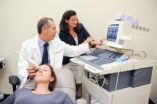(Press-News.org) Moving from a high-poverty to lower-poverty neighborhood spurs long-term gains in the physical and mental health of low-income adults, as well as a substantial increase in their happiness, despite not improving economic self-sufficiency, according to a new study published in the Sept. 20 issue of Science by researchers at the University of Chicago and partners at other institutions.
Although moving into less disadvantaged neighborhoods did not raise incomes for the families that moved, these families experienced important gains in well-being in other ways. Moving from a high-poverty neighborhood to one with a poverty rate 13 percentage points lower increased the happiness of low-income adults by an amount equivalent to the gains caused by a $13,000 rise in family income.
Using data from a large-scale randomized social experiment called Moving to Opportunity, the authors found that neighborhood income segregation had a greater impact than neighborhood racial segregation in shaping the outcomes of adults in the study. "This finding is important, in part, because racial segregation has been trending down since 1970, but income segregation has gone up steadily since then," said lead author Jens Ludwig, the McCormick Foundation Professor of Social Service Administration, Law and Public Policy at UChicago and director of the University of Chicago Crime Lab. "So the problem of adverse neighborhood effects on low-income families seems to be getting worse, rather than better, over time."
Another implication of the study is that looking at the growth over time in inequality with respect to family income — a key focus of much of the inequality discussion — understates the growth in inequality of well-being. Focusing on income inequality ignores the negative effects on poor families from growing residential segregation by economic status. The researchers estimate that the drop in happiness of low-income adults due to growing residential income segregation since 1970 is large enough to offset the full income growth for low-income Americans over the past four decades.
"Focusing just on trends in income inequality over time in the U.S., while ignoring the growth of income segregation over time, understates the trends towards greater inequality in well-being in America," Ludwig said.
The new paper, "Neighborhood Effects on the Long-Term Well-Being of Low-Income Adults," was co-authored by a national team of collaborators in addition to Ludwig. It relied on data from 4,604 low-income families that enrolled in Moving to Opportunity, an experiment that used a random lottery to offer some families initially living in distressed public housing projects the chance to move into lower-poverty areas. The Science paper looks at outcomes among adults 10 to 15 years after they moved.
The U.S. Department of Housing and Urban Development operated Moving to Opportunity from 1994 to 1998 in five cities: Baltimore, Boston, Chicago, Los Angeles and New York. Families volunteered for the study, and some were picked at random to receive housing voucher subsidies to move to lower-poverty communities. Other families were randomly assigned to a control group that received no special assistance under the program.
People in the study were extremely disadvantaged economically. Most households were headed by African American or Hispanic females —fewer than 40 percent of whom had completed high school. Their primary reason for participating was to get away from gangs and drug activity and find better apartments and better schools for their children.
A previous paper found that MTO participants who moved had fewer problems with extreme obesity and long-term risks. The study in Science showed that neighborhood environments have much broader effects on well-being for low-income families and implicate neighborhood income segregation as the key feature of distressed urban neighborhoods that seems to matter most for well-being.
"These findings suggest the importance of focusing on efforts to improve the well-being of poor families, rather than just the narrower goal of reducing income poverty, and the potential value of community-level interventions for achieving that end," Ludwig said.
###
Ludwig's co-authors on the paper were Greg Duncan (University of California, Irvine); Lisa Gennetian (Brookings Institution); Lawrence Katz (Harvard University); Ronald Kessler (Harvard Medical School); Jeffrey Kling (Congressional Budget Office); and Lisa Sanbonmatsu (National Bureau of Economic Research).
The study was supported by HUD, the National Science Foundation, the National Institute of Child Health and Human Development, The Centers for Disease Control and Prevention, the National Institute of Mental Health, the National Institute on Aging, the Institute of Education Services at the U.S. Department of Education, the John D. and Catherine T. MacArthur Foundation, the Smith Richardson Foundation, the Spencer Foundation, the Annie E. Casey Foundation, the Bill and Melinda Gates Foundation, the Russell Sage Foundation, and the Robert Wood Johnson Foundation.
Contact: William Harms, 773-702-8356, w-harms@uchicago.edu
Move to less impoverished neighborhoods boosts physical and mental health
2012-09-21
ELSE PRESS RELEASES FROM THIS DATE:
A mother’s nutrition--before pregnancy--may alter the function of her children’s genes
2012-09-21
Bethesda, MD—Everyone knows that what mom eats when pregnant makes a huge difference in the health of her child. Now, new research in mice suggests that what she ate before pregnancy might be important too. According to a new research report published online in The FASEB Journal, what a group of female mice ate—before pregnancy—chemically altered their DNA and these changes were passed to her offspring. These DNA alterations, called "epigenetic" changes, drastically affected the pups' metabolism of many essential fatty acids. These results could have a profound impact on ...
Treating disease by the numbers
2012-09-21
Mathematical modeling being tested by researchers at the School of Science at Indiana University-Purdue University Indianapolis (IUPUI) and the IU School of Medicine has the potential to impact the knowledge and treatment of several diseases that continue to challenge scientists across the world.
The National Science Foundation recently recognized the work led by Drs. Giovanna Guidoboni, associate professor of mathematics in the School of Science, and Alon Harris, professor of ophthalmology and director of clinical research at the Eugene and Marilyn Glick Eye Institute, ...
ORNL research uncovers path to defect-free thin films
2012-09-21
A team led by Oak Ridge National Laboratory's Ho Nyung Lee has discovered a strain relaxation phenomenon in cobaltites that has eluded researchers for decades and may lead to advances in fuel cells, magnetic sensors and a host of energy-related materials.
The finding, published in Nano Letters, could change the conventional wisdom that accommodating the strain inherent during the formation of epitaxial thin films necessarily involves structural defects, said Lee, a member of the Department of Energy lab's Materials Science and Technology Division. Instead, the researchers ...
Once usability becomes secure
2012-09-21
Risk increases with comfort: "Single Sign-On" permits users to access all their protected Web resources, replacing repeated sign-ins with passwords. However, attackers also know about the advantages such a single point of attack offers to them. Andreas Mayer, who is writing his PhD thesis as an external doctoral candidate at the Chair for Network and Data Security (Prof. Dr. Jörg Schwenk) at Ruhr-Universität Bochum, has now been able to significantly increase the security of this central interface for the simpleSAMLphp framework.
In the past, no protection against targeted ...
As painkiller overdoses mount, researchers outline effective approaches to curb epidemic
2012-09-21
WASHINGTON—Prescription painkillers are responsible for more fatal overdoses in the United States than heroin and cocaine combined. And while most states have programs to curb abuse and addiction, a new report from Brandeis University shows that many states do not fully analyze the data they collect.
Experts from the Prescription Drug Monitoring Program Center of Excellence at Brandeis University's Heller School for Social Policy and Management systematically assessed prescription drug monitoring programs and found a patchwork of strategies and standards. Their report ...
Walking to the beat could help patients with Parkinson's disease
2012-09-21
Walking to a beat could be useful for patients needing rehabilitation, according to a University of Pittsburgh study. The findings, highlighted in the August issue of PLOS One, demonstrate that researchers should further investigate the potential of auditory, visual, and tactile cues in the rehabilitation of patients suffering from illnesses like Parkinson's Disease—a brain disorder leading to shaking (tremors) and difficulty walking.
Together with a team of collaborators from abroad, Ervin Sejdic, an assistant professor of engineering in Pitt's Swanson School of Engineering, ...
Business plan competitions may be key to job growth
2012-09-21
A new study of high-tech startups that participated in the Rice Business Plan Competition (RBPC) shows that these entrepreneurs have a much higher rate of success than typical new ventures and are therefore more likely to contribute to job growth.
The study by the Rice Alliance for Technology and Entrepreneurship spans the 11-year life of the RBPC, the world's richest and largest business plan competition, which comprises teams of graduate students from throughout the world. The comprehensive and longitudinal study offers insights into the experiential factors that can ...
Taming physical forces that block cancer treatment
2012-09-21
It's a high-pressure environment within solid tumors. Abnormal blood and lymphatic vessels cause fluids to accumulate, and the uncontrolled proliferation of cancer cells within limited space leads to the buildup of what is called solid stress. Both types of pressure can interfere with the effectiveness of anticancer treatments, but while strategies have been developed that reduce fluid pressures, little has been known about the impact of solid stress or potential ways to alleviate it. Now a Massachusetts General Hospital (MGH) research team has identified factors that ...
The original Twitter? Tiny electronic tags monitor birds' social networks
2012-09-21
If two birds meet deep in the forest, does anybody hear? Until now, nobody did, unless an intrepid biologist was hiding underneath a bush and watching their behavior, or the birds happened to meet near a research monitoring station. But an electronic tag designed at the University of Washington can for the first time see when birds meet in the wild.
A new study led by a biologist at Scotland's University of St. Andrews used the UW tags to see whether crows might learn to use tools from one another. The findings, published last week in Current Biology, supported the theory ...
Moving targets
2012-09-21
PASADENA, Calif.—At any given moment, millions of cells are on the move in the human body, typically on their way to aid in immune response, make repairs, or provide some other benefit to the structures around them. When the migration process goes wrong, however, the results can include tumor formation and metastatic cancer. Little has been known about how cell migration actually works, but now, with the help of some tiny worms, researchers at the California Institute of Technology (Caltech) have gained new insight into this highly complex task.
The team's findings are ...


